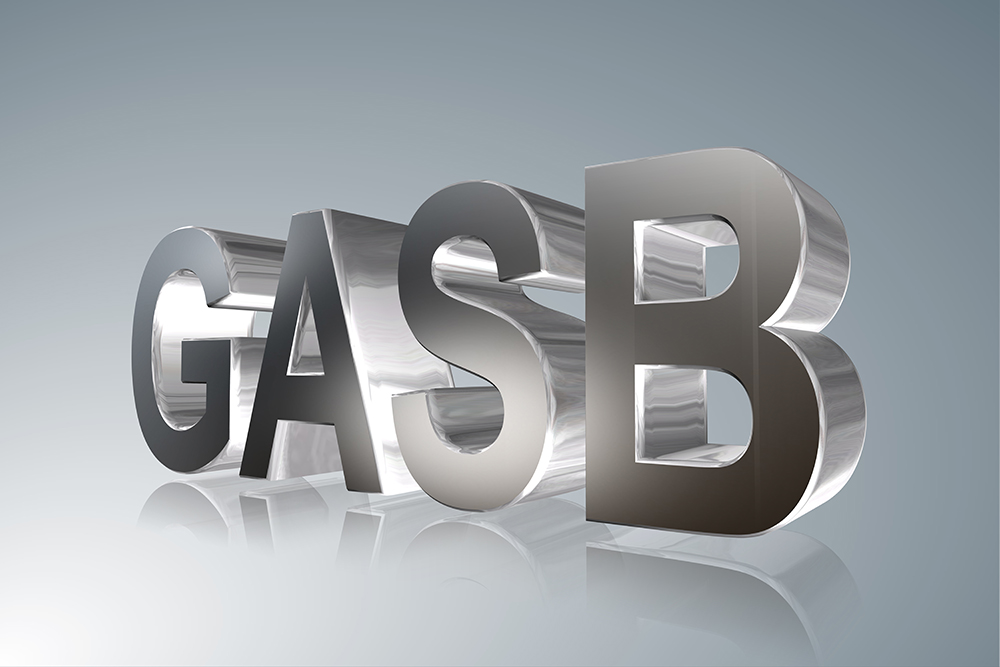For more than 20 years, we have followed the financial reporting model established by GASB Statement No. 34, which includes the Management’s Discussion and Analysis and major fund reporting. GASB 34 makes it possible to more fully assess a government’s overall financial health with the recording of capital assets and long-term debt in the government-wide financial statements.
In 2013, the Governmental Accounting Standards Advisory Council added the reexamination of the financial reporting model to its slate of pre-agenda research activities. After two years of research, they determined that most of the components of the financial reporting model remain effective; however, the Council highlighted several areas for improvement.
In September 2015, GASB added the financial reporting model project to its agenda. The project focused on areas to enhance the effectiveness of the financial reporting model and reduce the complexity and length of the financial statements.
In September 2018, GASB issued its Preliminary Views with a comment period and held public hearings, which resulted in much discussion and deliberation of the concepts and wording included in the Exposure Draft.
Most recently, on June 30, 2020, GASB provided final edits and approved the issuance of the Exposure Draft of the proposed Statement, Financial Reporting Model Improvements, which included the following significant changes:
- Management’s Discussion and Analysis (MD&A) would continue to be Required Supplementary Information (RSI). However, it would be limited to the related topics discussed in five sections: 1) Introduction, 2) Financial Summary, 3) Detailed Analyses, 4) Significant Capital Asset and Long-term Debt Activity, and 5) Currently Known Facts, Decisions, or Conditions. The proposed Statement emphasizes that “boilerplate” discussions should be avoided.
- Unusual or infrequent items would be required to be displayed as the last presented flow of resources before the new change in resource flows in the government-wide, governmental fund and proprietary fund statements of resource flows.
- Governmental funds would use a short-term financial resources measurement focus and accrual basis of accounting. This means the financial statement would reflect the amount of fund balance at the period-end that is available to spend in the next period. This would eliminate the current 60-day rule. Additionally, all long-term debt issued for short-term purposes would be recognized as a short-term transaction. Interfund balances and transfers would also be recognized as short-term transactions.
- The governmental fund balance sheet will now be titled “Short-term Financial Resources Balance Sheet,” and the government fund statement of revenues, expenditures and changes in fund balances will be titled “Statement of Short-term Financial Resource Flows.” The new statement would separately report inflows and outflows of resources related to the purchase and disposal of capital assets and the issuance and payment of long-term debt from other activities in governmental funds. The governmental fund financial statement captions would be assets, deferred outflows of resources, liabilities, deferred inflows of resources, fund balances, inflows of resources from current activities, outflows of resources from current activities, and net flows from noncurrent activities. This means governmental funds would no longer have revenues and expenditures. Also, special revenue funds will be known as special resources funds.
- Proprietary funds are required to continue to present separately operating and nonoperating revenues and expenses of the statement of revenues, expenses, and changes in fund net position. Nonoperating revenues and expenses would include 1) subsidies received and provided, 2) revenues and expenses related to financing, 3) resources from the disposal of capital assets and inventory, and 4) investment income and expenses. Operating revenues and expenses would be defined as all other revenues and expenses other than nonoperating revenues and expenses. An additional subtotal for operating income (loss) and noncapital subsidies must be presented before reporting other nonoperating revenues and expenses. Subsidies would be defined as 1) resources received from another party or fund to keep the rates lower than otherwise would be necessary to support the level of goods and services to be provided and 2) resources provided to another party or fund that results in higher rates than otherwise would be established for the level of goods and services to be provided.
- Budgetary comparison information would be presented using a single method of communication as Required Supplementary Information (RSI). Governments would also be required to present 1) variances between final budget and actual amounts and 2) variances between original and final budget amounts. An analysis of significant variances would be presented in notes to RSI rather than in the MD&A.
GASB plans for a comment period and public hearings to be held, after which time they will redeliberate the issues based upon all the feedback and plan to issue a final statement in June 2022.
Based on the timeline, GASB has spent many years determining the best approach to improving the financial reporting model and implementation is not planned until June 2025 or 2026, depending on the revenue size of the government.
Please contact your local Yeo & Yeo government auditor if you have questions.
To read the full Exposure Draft, click here and click the Accept button.

